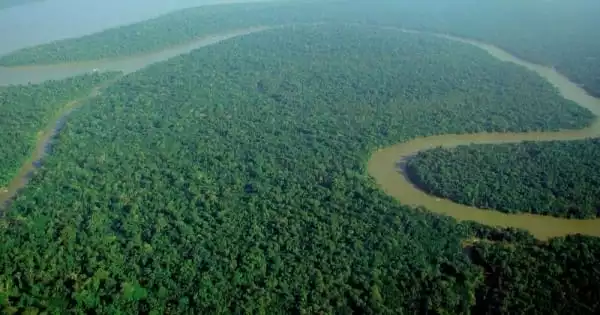Tropical rainforests have the greatest diversity of biodiversity of any environment on the planet. They support a diverse range of plants, animals, fungus, and other species. The Amazon Basin in South America, the Congo Basin in Central Africa, and the enormous archipelago of Southeast Asia are where the majority of these forests are found.
Due to their consistently warm and humid temperature and geographic position near the equator, one may believe that all tropical rainforests are about identical in diversity, however, this is not the case. For several categories of creatures, the number of species in Africa’s humid tropical forests is much fewer than in South America and Southeast Asia.
Palms with few species
This is a nice example of unequal distribution. Palm trees are an example of the pantropical diversity disparity (PDD): of the 2,500 species globally, 1,200 are found in Southeast Asia, 800 in South America’s tropical forests, but just 66 in African rainforests.
The reason for this is a point of contention among biodiversity experts. There is some evidence that the current climate is to blame for Africa’s tropical forest’s decreased species richness. The tropical belt of Africa has a drier and milder temperature than Southeast Asia and South America.
Other data implies that the three tropical forest regions’ varied climatic and geological histories spanning tens of millions of years influenced their biodiversity levels. The creation of mountains, islands, and dry and desert areas are examples of such environmental shifts.
However, distinguishing between the two aspects of present climate and environmental history is challenging.
Mountain building brings up diversity
Researchers at ETH Zurich, led by Loc Pellissier, Professor of Landscape Ecology, have studied this subject using a novel computer model that allows them to mimic species diversification across millions of years of development. They come to the conclusion that the current climate is not the primary cause of declining biodiversity in Africa’s rainforests.
Rather, biodiversity has arisen as a result of mountain-building mechanisms and climatic change. The findings of the historical simulations are very similar to current patterns of biodiversity distribution.
“Our model confirms that differences in palaeoenvironmental dynamics produced the uneven distribution of biodiversity, rather than current climatic factors,” says Pellissier. “Geological processes, as well as global temperature fluctuations, determine where and when species emerge or go extinct.”
Geological processes, in particular, are critical to a continent’s high biodiversity. The construction of mountains, such as the Andes in South America, and the establishment of archipelagos, such as in Southeast Asia, are both aided by active plate tectonics. These two processes provide a plethora of new ecological niches, which in turn produce a plethora of new species.
In contrast, Africa’s rainforest belt has experienced less tectonic action during the last 110 million years. It’s also modest since it’s surrounded on the north and south by drylands, which limit its range. “Species from humid regions can hardly adapt to the dry conditions of the surrounding drylands,” Pellissier points out.
Geologically vibrant continents produce higher biodiversity
The ETH researchers’ “gen3sis” model was just recently published in the journal PLoS Biology. It’s a mechanistic model in which core limitations like geology and climate are represented alongside biological systems, allowing biodiversity patterns to emerge.
The most critical processes to include in the model to replicate the formation of biodiversity are ecology (each species has its own finite ecological niche), evolution, speciation, and dispersion.
“With these four basic rules, we can simulate the population dynamic of organisms over shifting environmental conditions and offer a very good explanation for how the organisms came about,” Pellissier says.
The researchers were able to mimic species diversity without needing to enter (distribution) data for each unique species by basing their model on these basic evolutionary dynamics. However, data on the geological dynamics of the continents under consideration, as well as humidity and temperatures from climatic reconstructions, are required by the model.
The researchers are currently improving the model and performing simulations to better understand how biodiversity emerges in other species-rich areas, such as western China’s highlands. The palaeoenvironmental reconstructions and the model code are both open source. It may be used by all interested evolutionary and biodiversity scholars to examine the genesis of biodiversity in various parts of the world.
















